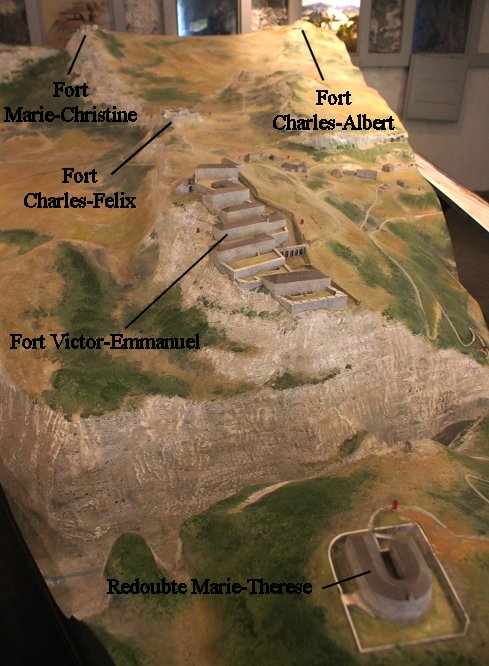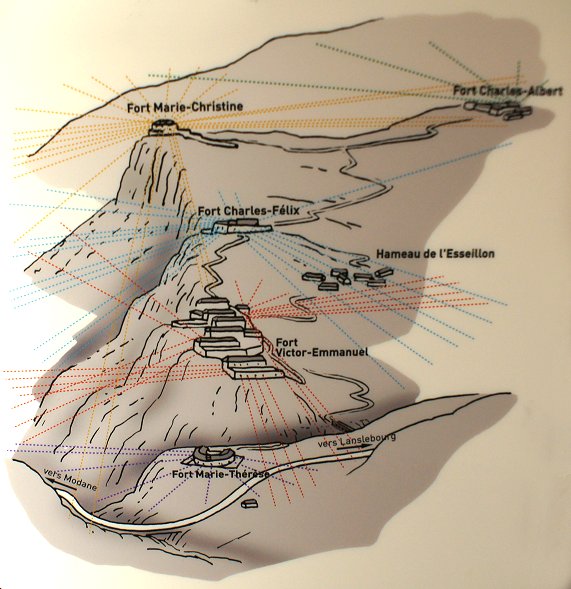In France, fortress design had stagnated with the death of Vauban and the creation of a military engineering academy at Mezieres that held Vauban's techniques as nearly infallible. The most important innovations came from outsiders. The most important of these innovators was a French cavalry officer, Marc Rene de Montalembert. His theories were little used within France, but he was a prolific author, and his concepts and designs were noticed in other countries. The Savoyard engineer, Captain Olivero, had been introduced to Montalembert's concepts through Austrian sources. He planned five forts - one on the south side of the river gorge and four on the north side, with three of those along the cliffs. Each fort was designed to support the others but were out of range of potential enemy artillery on the surrounding higher ground. The forts were given names of members of the royal family - a family with an obvious predisposition for hyphenated first names.
Montalembert saw the disadvantages of the traditional bastioned Italian trace - that fire on the rear of gun positions along with mortars and richocet fire made bastions without overhead protection very dangerous places for the defenders. Ditches allowed the enemy to infiltrate easily from the outer edge of defenses all the way to the main line of defense, and the way that forts were arranged made it difficult to mass and launch sorties. Montalembert's 'polygonal' designs largely eliminated bastions while reducing the depth of defenses. Polygonal forts featured cannon on several stories within casemates where they were protected from richocet and indirect fire.

